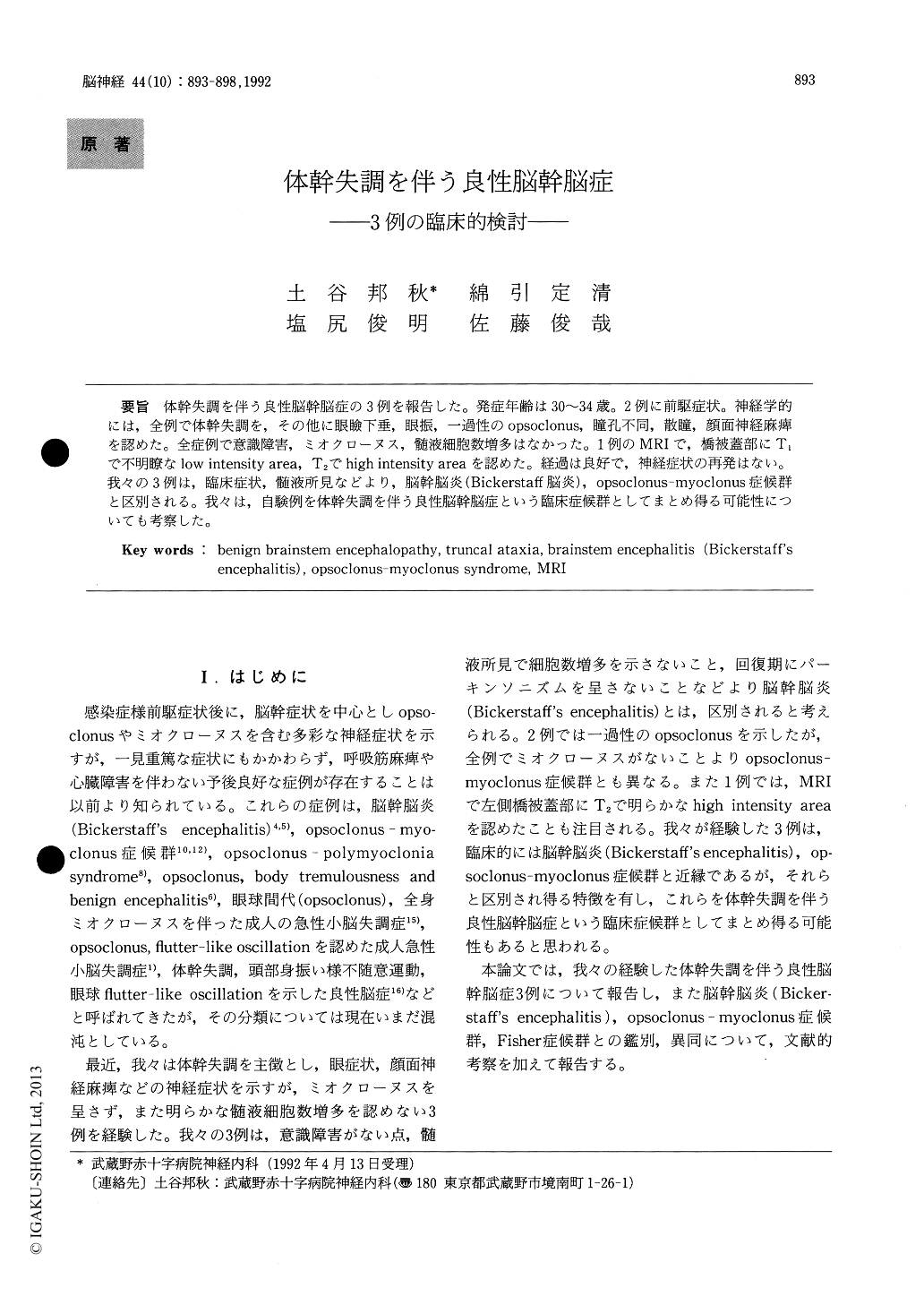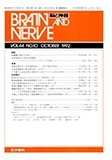Japanese
English
- 有料閲覧
- Abstract 文献概要
- 1ページ目 Look Inside
体幹失調を伴う良性脳幹脳症の3例を報告した。発症年齢は30〜34歳。2例に前駆症状。神経学的には,全例で体幹失調を,その他に眼瞼下垂,眼振,一過性のopsoclonus,瞳孔不同,散瞳,顔面神経麻痺を認めた。全症例で意識障害,ミオクローヌス,髄液細胞数増多はなかった。1例のMRIで,橋被蓋部にT1で不明瞭なlow intensity area, T2でhigh intensity areaを認めた。経過は良好で,神経症状の再発はない。我々の3例は,臨床症状,髄液所見などより,脳幹脳炎(Bickerstaff脳炎),opsoclonus-myoclonus症候群と区別される。我々は,自験例を体幹失調を伴う良性脳幹脳症という臨床症候群としてまとめ得る可能性についても考察した。
Three cases (case 1, female, aged 30 ; case 2, male, aged 32 ; case 3, male, aged 34) of benign brainstem encephalopathy with truncal ataxia were reported. Two patients had prodromal symptoms. Neurological examination revealed truncal ataxia in all cases. As additional neurological signs, anisocoria, mydriasis, nystagmus, ptosis, transient opsoclonus, and facial palsy were seen. There was neither drowsiness nor myoclonus in the three cases. On laboratory examinations, cold agglutination test revealed significant elevation in two cases. The examination of cerebrospinal fluid showed a mode-rate rise of proteins in one case, but did not revealed pleocytosis in any of the cases. Magnetic resonance imaging of one patient revealed an area of high intensity in the left pontine tegmentum by T2-weighed imaging. The prognosis for all these cases was good, and the reappearance of neurological signs was not present until now.
Our cases were different from brainstem encepha-litis (Bickerstaff's encephalitis) because of an absence of disturbed consciousness and no pleocytosis in the cerebrospinal fluid. Our cases were also different from "myoclonus-opsoclonus syndrome" because of an absence of myoclonus. We discussed a possiblity of a new clinical syndrome which we call "benign brainstem encephalopathy with truncal ataxia".

Copyright © 1992, Igaku-Shoin Ltd. All rights reserved.


